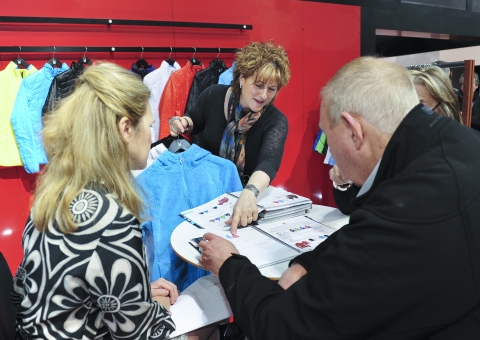SIA Snow Show Focuses on Quality vs. Quantity of Attendees

SnowSports Industries America puts on the largest show in its market sector every year, SIA Snow Show, but instead of focusing on getting as many people to the show as possible, they put their energies instead into ensuring that the people who are there have the most buying power.
“In our industry and other industries there is consolidation at the supplier and retailer level,” said SIA President David Ingemie.
For example, he added, if a company like Sport Chalet buys up another smaller company, there are now fewer people who are going to attend the show. Even so, Ingemie said, that doesn’t dilute the actual buying power of those who do attend.
In other words, numbers aren’t everything.
“Our goal is not to just play fuzzy wuzzy,” Ingemie said. “I have people there who try to audit very closely who comes and who doesn’t come.”
He added that the show works with exhibitors to identify who they want to see at the show.
“Are we perfect? Gosh no,” Ingemie said, adding that they work hand-in-hand with the board, made up of market leaders in each category, to constantly analyze attendance.
He added that they work on a personalized program and do not pay for anyone to come to the show. “We’ve always wanted the right people at the show,” Ingemie said.
Using an audited measurement of sales per storefront attending the Snow Show, in conjunction with supplier sales information provided by SIA members, who also own the nonprofit show, the association partners with Leisure Trends Group to calculate the buying power represented at the show each year.
That figure, known as the SIA Buying Power Index, has been up to 80 percent during the past several years, according to SIA Director of Research Kelly Davis.
“The idea is there is a specific amount of buying power in the industry, and 80 percent of that buying power is coming to the snow show," Davis said.
In all, she added, there are 2,100 ‘doors’ (stores that sell snow sports goods) that represent a $3.4 billion industry.
SIA’s efforts seem to be paying off.
Wendy Carey CFO of Seirus Innovation– a manufacturer of cold-weather gear – said her company has been exhibiting at the show for more than 30 years and had a 40x100 square foot booth at the show earlier this year in Denver.
She added that her company literally brings hundreds of products to the show every year. “It’s the only place we show the whole line,” she added. “The SIA Show is the one place where all segments of the industry come together.”
Carey said that even though at times the aisles of the show may not have had as many people, the buying power at the show has increased.
One of the reasons for an attendance dip a few years ago was the show moved from Las Vegas to Denver.
“There may have been a lot more people in Las Vegas, but they weren’t there to buy,” Carey said.
She added, “Retailers time out of the store is very precious. I think the value that has been shown to us is they keep showing up.”
Though numbers aren’t everything to SIA, just like any other show, they still are looking for new attendee segments to tap into, including several new boutiques that have opened recently and now attend the show.
Ingemie said international markets that have seen growth include Australia, Canada, New Zealand and South America.
He added the key to attracting newcomers and maintaining existing attendees is to keep a buzz around the show 365 days a year by sending out press releases, promoting videos taken at the show and engaging through social media.
“Because we are member-owned and nonprofit, our goal is to have the best show and not make the most money,” Ingemie said.


Add new comment